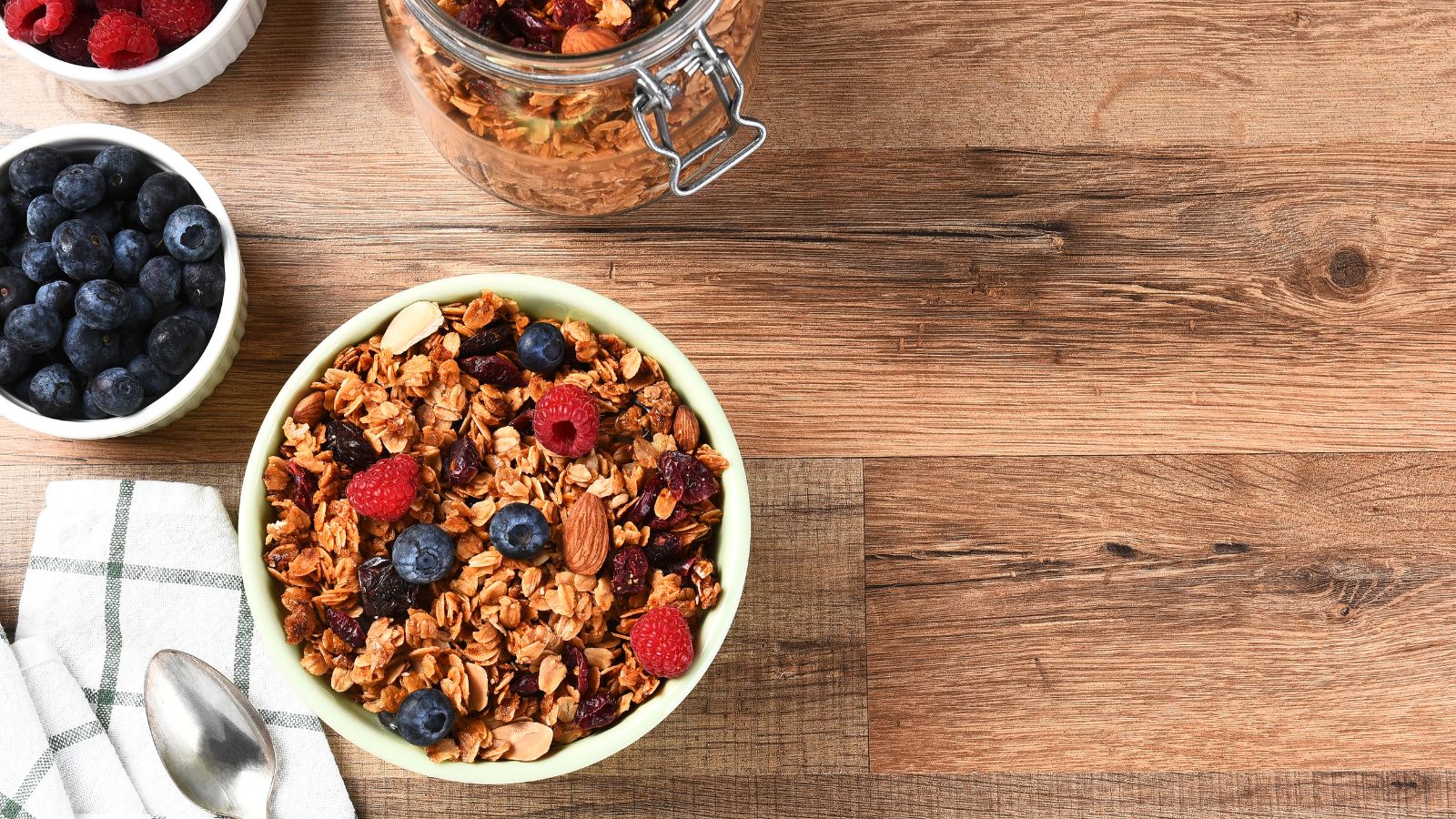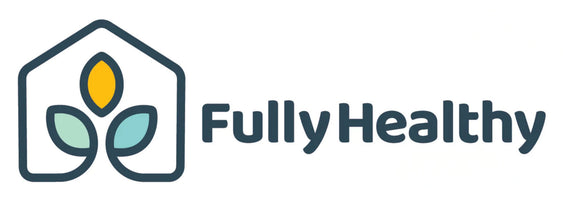
What Is Gluten Free Cereal? A Complete Guide to Safe Choices
Photo Credit: Canva Pro
What is gluten free cereal? Picking the right cereal can be hard if you can't have gluten. Certified gluten-free cereals do not contain wheat, barley, or rye; however, highly sensitive individuals with celiac disease should still exercise caution due to possible trace amounts.
Our article talks about gluten-free cereal, foods that don't contain gluten by nature, what happens when you stop eating gluten, and how to get gluten-free products that you can trust.
What is gluten free cereal?
Photo Credit: Canva Pro
What is gluten free cereal? For people who need to stay away from gluten for health reasons, picking a gluten-free cereal is important. Certain grains, like wheat, barley, and rye, contain a protein called gluten. Celiac disease, gluten intolerance, or gluten sensitivity patients should stay away from cereals that contain gluten.
There are many gluten free cereal options today made from gluten free grains like corn, rice, and oats. Prior to purchasing, always look for a label that says "certified gluten free."
Understanding Gluten and Its Presence in Cereals
Cross-contamination during processing or the addition of gluten-containing ingredients can cause cereal to contain gluten. Many popular cereals have gluten-containing ingredients. Today, though, there are a lot of gluten-free cereals easily accessible in grocery stores.
-
Gluten-containing cereals: Cereals with malt flavoring, and wheat cereals
-
Gluten-free grains: rice, corn, quinoa, cassava flour, certified gluten-free oats
Different Types of Gluten-Free Cereals
However, some cereals don't contain gluten by nature, and others do have a gluten-free version. Finding the right cereal means carefully reading the list of ingredients.
-
Naturally gluten-free options: puffed rice, corn chex, rice chex, corn flakes
What means gluten-free?
Photo Credit: Canva Pro
What is gluten-free cereal? On a gluten-free diet, you don't eat any foods that have gluten in them. A lot of grains and processed foods are in this group.
If you have celiac disease or gluten sensitivity, you have to live a strict gluten-free life. In individuals with celiac disease, even small amounts of gluten can damage the small intestine. People stay healthy and feel better when they choose gluten-free foods.
The True Definition of Gluten-Free Foods
Foods that don't have gluten don't contain wheat, barley, rye, or triticale. These foods don't have any gluten proteins that are bad for people who are celiac disease or who have trouble digesting gluten.
-
Gluten-containing grains to avoid: Wheat, barley, rye
-
Safe gluten-free grains: Corn, rice, quinoa, cassava flour
Who Should Follow a Gluten-Free Diet and Why
A lot of people eat gluten-free because they need to for health reasons or because they feel better when they do. For sensitive people, gluten can make their stomachs hurt and give them other symptoms.
-
Medical reasons: Gluten sensitivity, gluten intolerance, and celiac disease
-
Lifestyle reasons: Part of a gluten-free lifestyle for health in general
What common foods are gluten-free?
Photo Credit: Canva Pro
To begin with, a lot of foods are naturally gluten free. Simple, whole foods like meat, vegetables, and fruits are some of these. The easiest way to eat gluten free and stay healthy is to choose foods that are naturally gluten free.
If you have gluten intolerance or gluten sensitivity, it’s even more important. When you buy processed foods, always look for a certified gluten-free label and read it twice to make sure there is no hidden gluten. If you're wondering what gluten-free cereal is, good gluten-free cereal options include ones from Fully Healthy and cereals made with cassava flour.
Naturally Gluten-Free Food Staples
Some foods are safe on their own, so they don't need any extra labels. If you are following a gluten-free diet, these everyday foods are great options.
-
Fruits and vegetables: Apples, bananas, spinach, carrots
-
Proteins: Beef, chicken, fish, eggs
-
Grains: Oats that are gluten-free, corn, and rice
Gluten-Free Versions of Popular Foods
These days, you can get a lot of traditional foods without gluten. These are helpful when you want to eat normal foods without worrying about getting gluten.
-
Gluten-free breads and pastas: made with cassava flour, rice flour, or other gluten-free flours like almond, sorghum, or buckwheat.
-
Gluten-free oatmeal: Gluten-free oats and oatmeal are made in a facility just for gluten-free products
What happens to your body when you stop eating gluten?
Photo Credit: Canva Pro
When you stop eating foods that contain gluten, your body can heal in many ways. Digestion, skin, and energy levels often get better for people with celiac disease or gluten sensitivity. Another benefit of a gluten-free diet is that it helps the small intestine heal over time.
For a better final product, picking gluten-free cereals that aren't made with barley, wheat, or rye is a key step.
Immediate and Long-Term Health Changes
In celiac disease patients, a gluten-free diet promotes gut healing and reduces symptoms. A lot of people feel better after switching to gluten-free cereals and avoiding foods contaminated with gluten.
-
Gut healing: Lower inflammation in the small intestine after going gluten-free
-
Digestive improvements: A smaller stomach, fewer stomachaches, and better absorption of nutrients.
-
Energy boost: Higher energy because foods like rice, corn, and protein are properly absorbed by the body
How Quickly Improvements Can Be Felt
Everyone gets different results. Some people feel better in a few days, while others may not entirely recover for months. Choosing certified gluten-free cereals, such as specific Nature's Path products, can help; caution is advised with cereals like Cheerios due to potential cross-contamination risks.
-
Short-term changes: Within a few weeks, less pain and better digestion
-
Long-term benefits: Staying strictly gluten-free can help your health and help you concentrate.
What products does Fully Healthy offer for gluten-free living?
There are many gluten-free foods at Fully Healthy that can be used for breakfast, snacks, and cooking. Their main goal is to meet the needs of the gluten-free community by providing organic and clean-label foods.
Their cereals and baking supplies are made without any ingredients that contain gluten, and often produced in a dedicated gluten free facility to avoid cross contaminated risks.
Exploring Gluten-Free Options at Fully Healthy
It's easy to eat gluten-free every day at Fully Healthy because they have lots of options. Their foods are great for kids and adults who like healthy, tasty foods.
-
Gluten-free cereals: There are grain-free, puffed rice, corn flakes, and fruity pebbles.
-
Breakfast favorites: Gluten-free oats, organic corn cereals, and dairy-free foods can all be used to make oatmeal.
-
Safe sweeteners: products that don't have added sugar or artificial flavors
Why Fully Healthy Stands Out for Gluten-Free Shoppers
Fully Healthy knows what it's like to live a gluten-free life. They have foods that are good for you for breakfast and don't have any hidden gluten or other harmful ingredients.
-
Special treats: You can get frosted mini cereals without gluten.
-
Clean ingredients: made with corn, rice, honey, cassava flour, and rice for a safer end result
Final Thoughts
Every day, people who are sensitive to gluten have to make smart decisions. You can live a safe and healthy gluten-free life if you know what gluten-free cereal is. When you buy cereal or other foods, always look for the label that says "gluten free."
If you want to protect your small intestine, eat free cereal made with corn flakes, cassava flour, or other grain-free options. If you choose organic breakfast foods like oatmeal, rice, protein, milk, and honey, the end result will be better for your health. You can still enjoy food the same way if you don't eat gluten.
FAQs
What is gluten-free cereal, and why is it important?
Gluten-free cereal is made without wheat, barley, or rye. It protects the small intestine for people with gluten sensitivity.
Can I eat gluten-free foods like corn flakes and oatmeal for breakfast?
Yes, corn flakes, oatmeal, and other foods labeled gluten-free are safe to eat gluten-free every morning with milk and honey.
Is there a grain-free and organic cereal that kids love?
Yes, grain free cereals made with cassava flour and organic ingredients like rice and honey are cereals kids love, like Lucky Charms gluten free version.
How do I make sure the final product is really gluten-free?
Always double-check the gluten free label. Make sure there is no cross contamination so the final product stays safe for the gluten free lifestyle.
Can I still enjoy foods the same way on a gluten-free diet?
Yes, you can eat gluten-free foods and enjoy breakfast the same way with cereal, protein, rice, milk, and organic honey without missing out.

Leave a comment